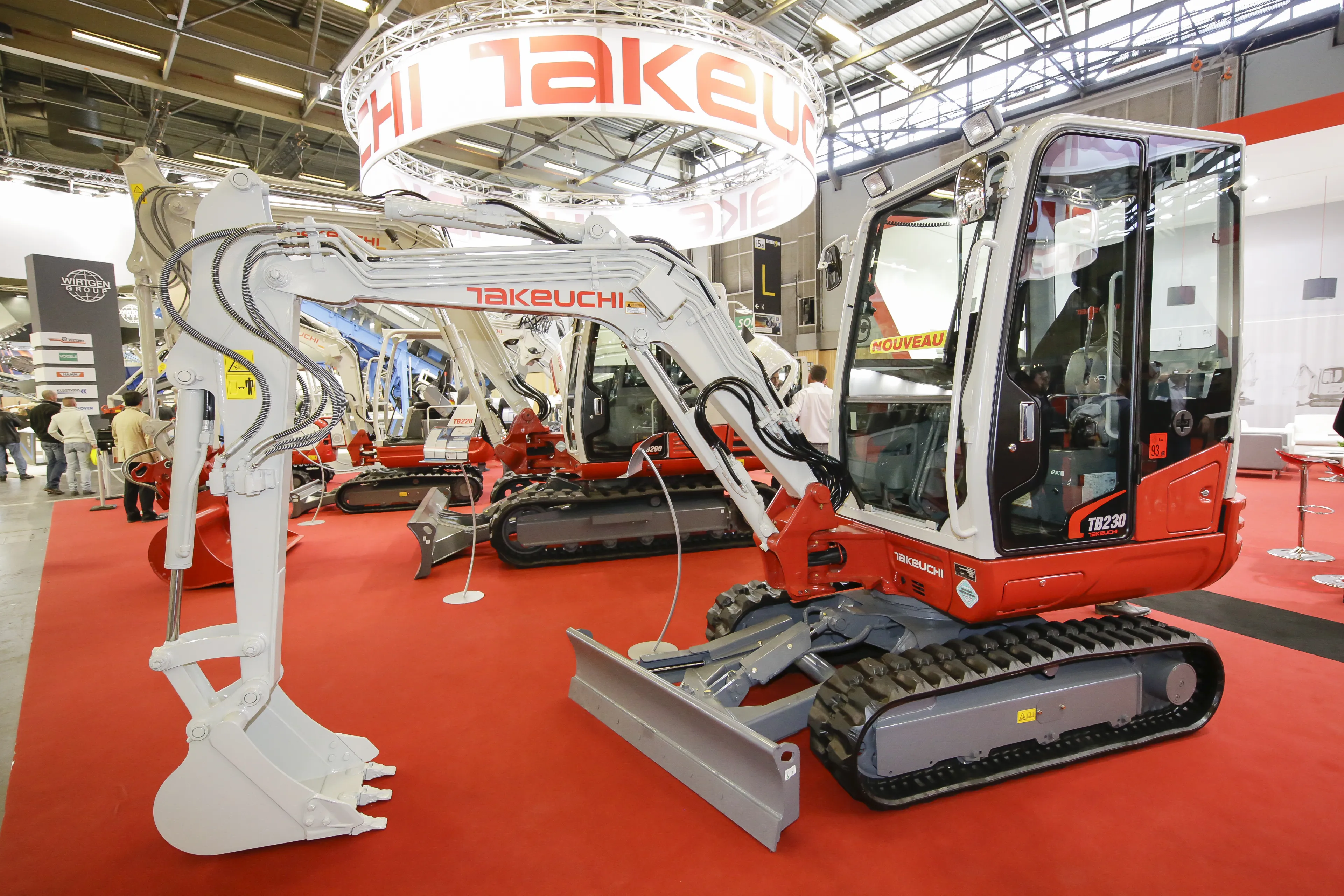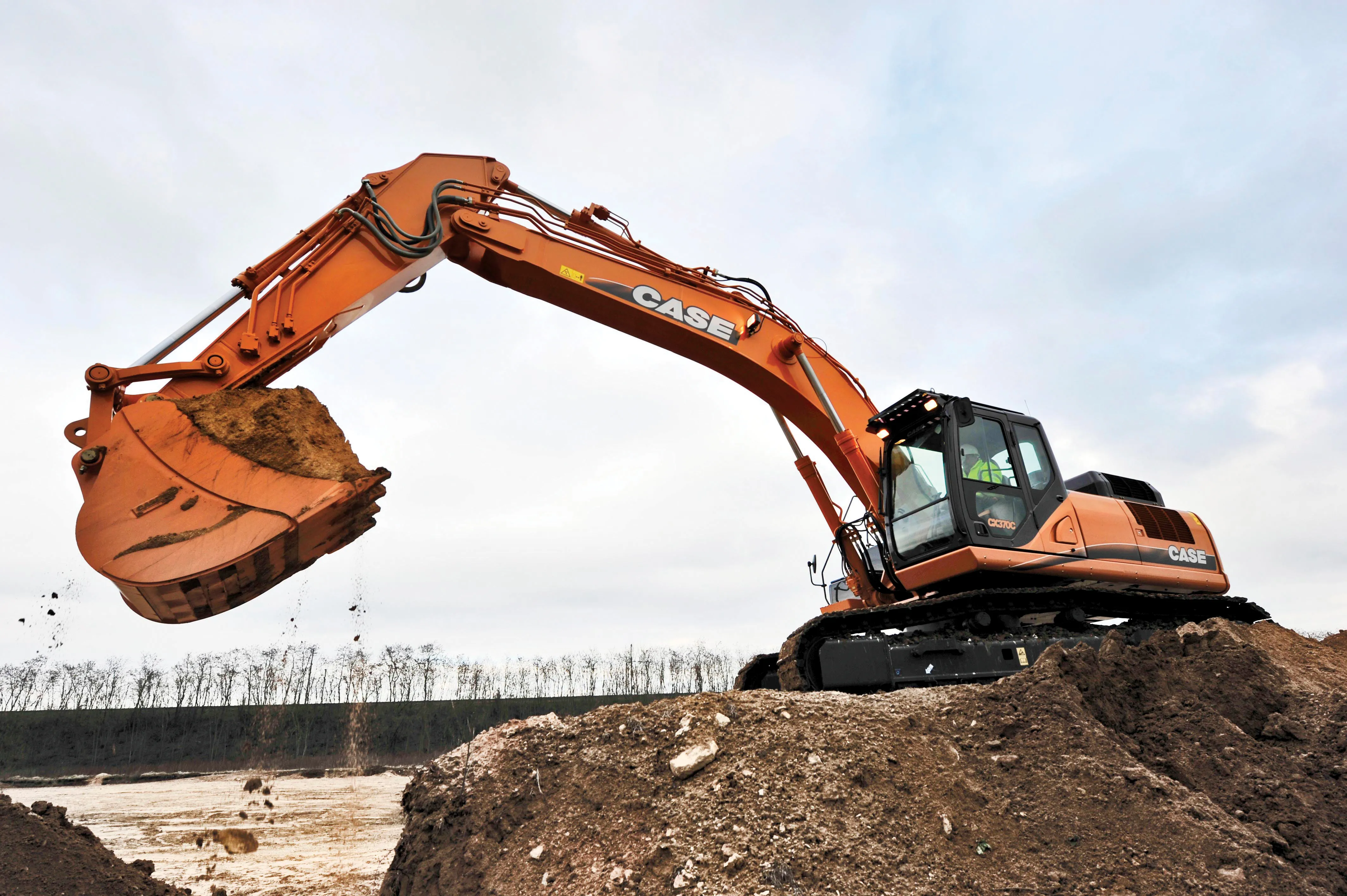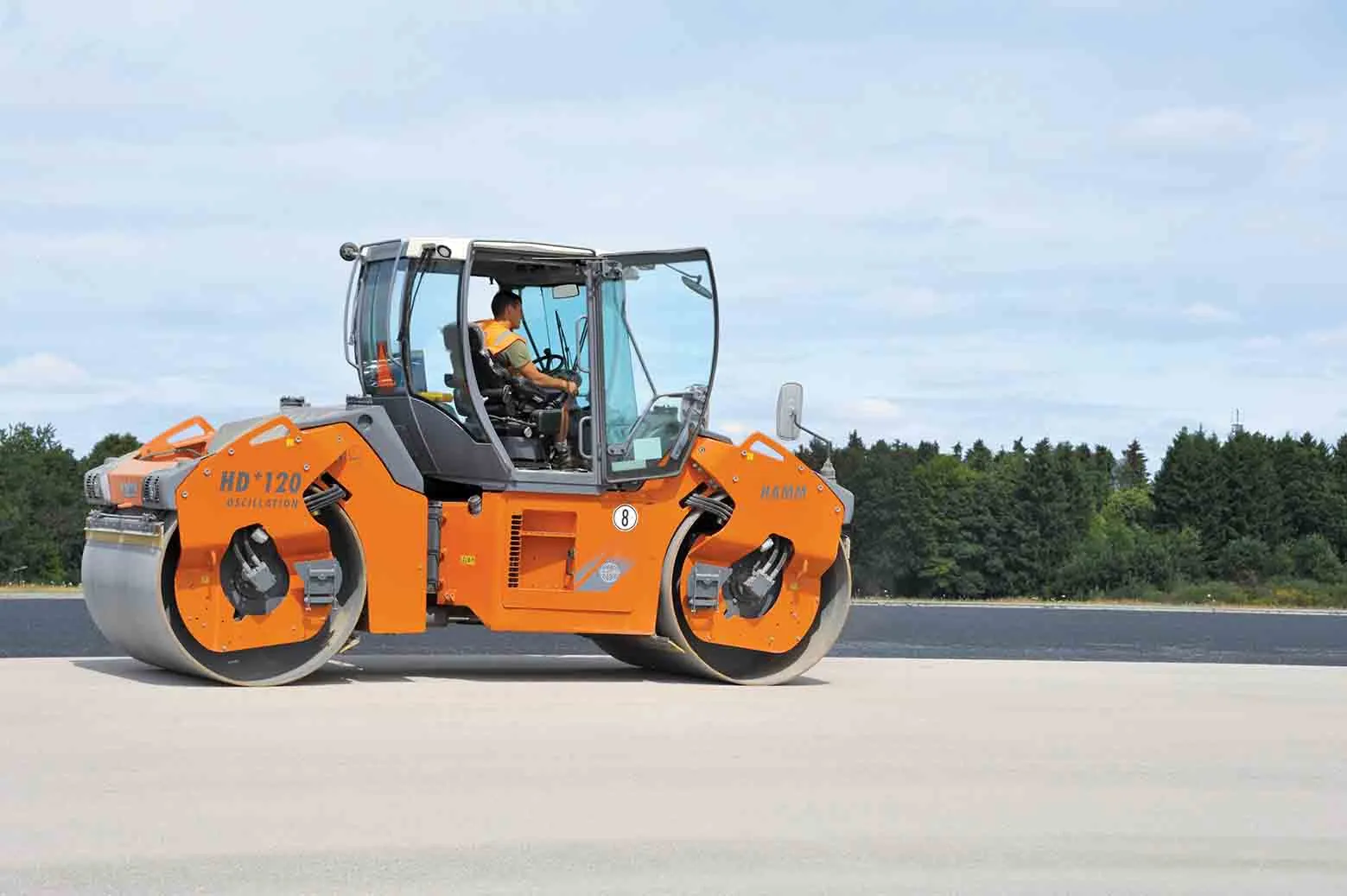Takeuchi has revealed three mini excavators, two to replace existing models and a totally new addition to the line-up. The smallest of the three, the TB210R, is currently in prototype form, but should be with dealers by the end of 2015. Weighing in at 1,150kg it will eventually replace the 800kg TB108 as Takeuchi’s smallest micro digger.
Despite the additional weight, the machine boasts very compact dimensions, with hydraulically-retractable tracks giving a travel width of just 750mm. This can be expanded
January 6, 2017
Read time: 2 mins

Despite the additional weight, the machine boasts very compact dimensions, with hydraulically-retractable tracks giving a travel width of just 750mm. This can be expanded to 1,020mm for maximum stability when working. The machine is powered by a
The TB230 will replace Takeuchi’s popular TB228. Weighing 2,856kg, the new model gets a larger cab as standard, with air conditioning. Power comes from a
Lastly, the TB240 (at 4,014kg) provides an additional model between Takeuchi’s traditional 3 tonne and 5 tonne midis. The machine builds on the structure of the 3 tonne TB230, though using a 26kW version of the Yanmar engine. Longer digging equipment delivers a maximum digging depth of 3,465mm, compared to the TB230’s 2,835mm, and a reach of 5,545mm against 4,850mm. All three mini excavators should be on sale by the end of this year.








